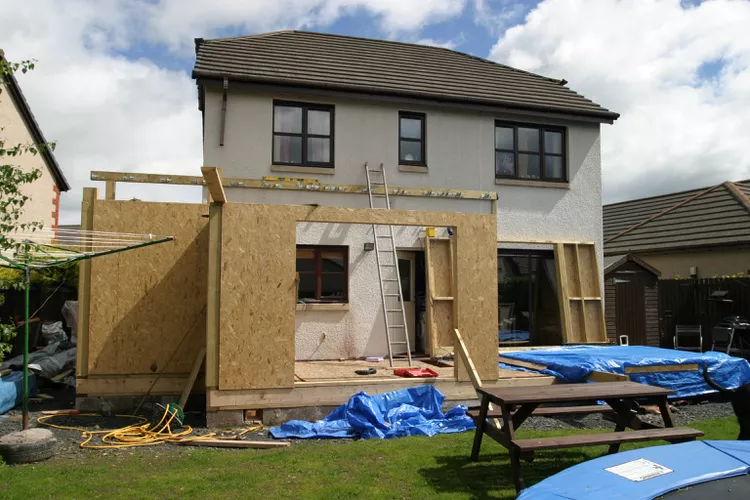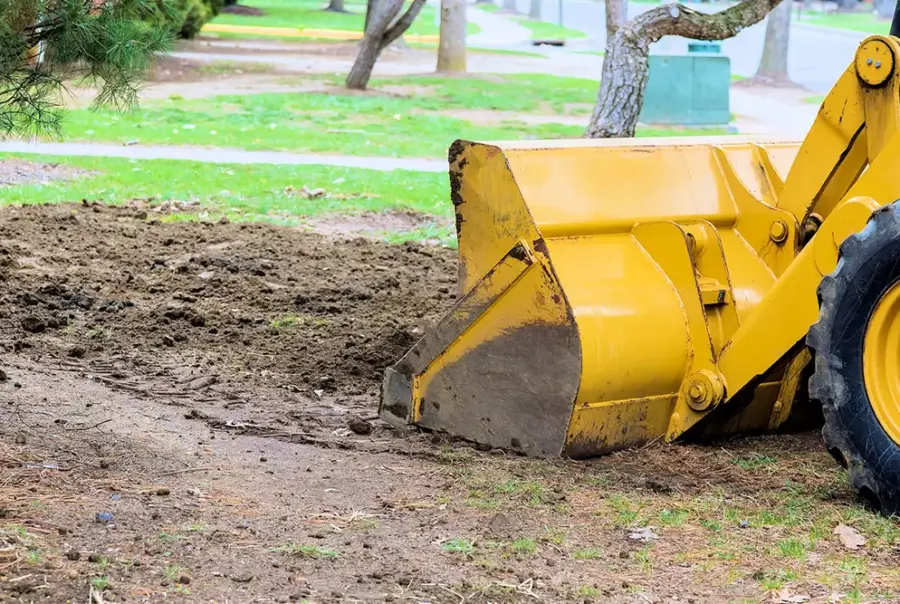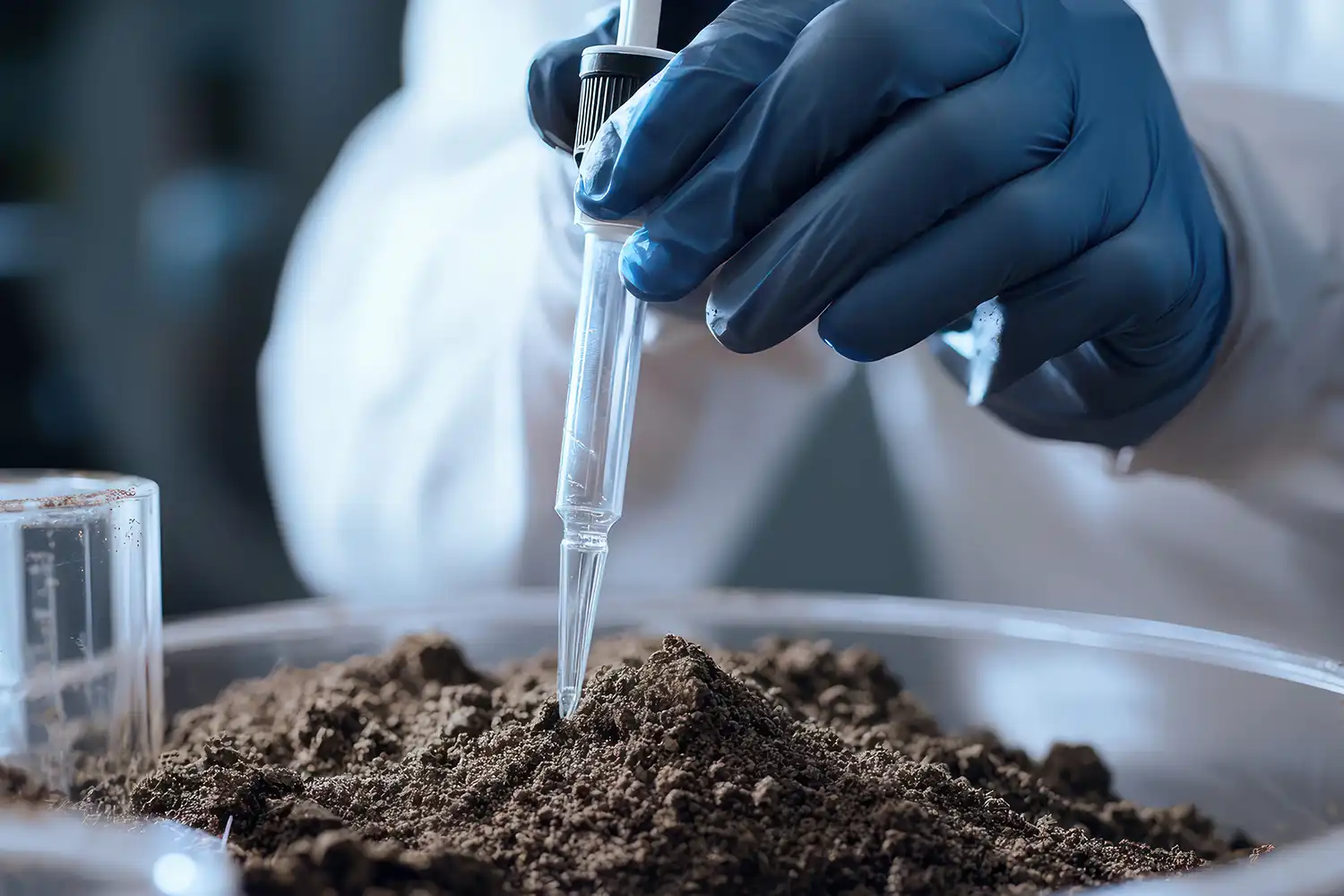Testing soil for construction is done to assess its capacity to support the expected load and guarantee the stability of the structure.
There are several methods of investigation. The choice depends on the characteristics of the soil. Let’s explore how to do soil testing for construction.
Understanding Soil Testing for Construction
This is a set of analyses and tests conducted on samples taken from the construction site. It aims to determine the soil’s physical, chemical, and mechanical properties. With the data obtained, engineers can assess the behavior of the soil and its suitability for various stages of construction, such as for a home addition Toronto.
The process of soil testing for construction work includes several methods and procedures that help examine its properties and assess compliance with construction requirements. It involves:
- sampling;
- processing;
- analysis of the samples.
This enables making technically sound decisions.

Why is Soil Testing Important in Construction?
Soil testing for foundation construction plays a key role in ensuring the reliability and durability of construction projects. By analyzing its properties, specialists minimize possible risks. After all, the strength and stability of the entire structure depend on the quality of the foundation.
Soil testing in construction projects allows experts to:
- determine the optimal foundation design;
- select appropriate materials;
- assess the feasibility of the project.
The lack of accurate data can lead to serious problems:
- foundation settlement;
- terrain instability;
- destruction of the building.
If this happens, be sure to contact foundation crack repair Toronto.
Optimal Timing for Soil Testing
Soil testing for construction is carried out after excavation of the foundation pit, but before pouring the foundation.
Testing soil for contamination is necessary even before earthworks begin, especially if the area is known for previous accidents. It should also be conducted immediately if suspicious odors appear during the excavation process.
Soil testing is sometimes performed before purchasing a land plot, with documentation stating that the agreement will depend on the test results.
In some cases, soil testing may continue throughout the entire construction process.
Who Conducts Soil Testing?
Soil engineers are responsible for collecting soil samples and collaborating with environmental laboratories to carry out the analysis. These specialists can be hired privately. To work in this field, an engineer must:
- have a degree in civil engineering;
- obtain the appropriate license;
- pass the Fundamentals of Engineering (FE) exam.
It is important to choose an organization with a solid reputation and extensive experience.
Soil Testing Methods for Building Construction
The process of conducting soil tests for construction consists of several key stages, each providing important information about soil characteristics. At this stage, you may also need excavation services in Toronto. Implementing continuous soil condition monitoring throughout the construction period ensures compliance with safety standards and structural requirements.

Moisture Content Analysis
This is conducted using several techniques:
- Gravimetric method (oven drying). The sample is weighed in its moist state, then dried in an oven at a standard temperature (approximately 110°C), and weighed again to calculate the moisture content based on the difference in weight.
- Calcium carbide method. The sample is combined with a compound that generates acetylene, with the quantity formed depending on the soil’s moisture content.
- Torsion balance method. Measures the loss of sample weight during the drying process.
- Pycnometer method. A pycnometer is used to determine the moisture content by measuring the volume change after the sample is saturated with water.
Moisture control in soil is a key step in construction calculations. This data is essential for the proper design of foundations, slopes, and supporting structures.
Specific Gravity Test
The specific gravity of a material is determined by comparing its density to the density of water. The main methods include:
- Gas jar method. The sample is placed in a gas jar filled with water, and the volume of the displaced liquid is measured. This method is most commonly used for coarse-grained soils.
- Measuring flask method. A specified volume of the material is placed into a measuring flask and weighed. Water is then added, and the mass is measured again. The difference between the two measurements enables the calculation of the specific gravity.
- Density bottle method. The material is initially placed into a specialized empty bottle with a set volume and then weighed. The bottle is then filled with water and weighed again.
Each of these methods offers distinct benefits, enabling the selection of the most appropriate option to guarantee precise and dependable results.
Atterberg Limits Test
Used to determine the critical moisture content level in fine-grained soil. There are three main limits that help evaluate its properties:
- Shrinkage limit. The quantity of moisture capable of filling the voids in the soil structure is calculated mathematically.
- Plastic limit. The sample is mixed with water until it becomes a plastic mass, then formed into a ball and rolled into a 3 mm thread. If the thread remains intact, the test is repeated with less water and a new sample until it starts to break.
- Liquid limit. The Casagrande device helps determine the moisture level at which the soil changes to a liquid state.
These tests are essential for assessing the behavior of fine-grained soil during construction, ensuring the stability and reliability of structures.
Proctor Compaction Test
First, the soil is air-dried and about 3–5% water is added. Then, the samples are placed into the Proctor mold, compacted thoroughly, then removed and dried to determine their moisture content and dry density.
The results of this test provide key information on how the soil behaves under structural loads, helping to choose suitable construction materials and techniques.
Shear Strength Testing
Soil’s shear resistance determines its ability to withstand deformation under direct load, which depends on cohesion and the internal friction angle.
Testing methods include:
- Vane shear test.
- Borehole shear test.
- Direct shear test.
- Triaxial test.
- Unconfined compression test (UCC).
Each of these methods provides valuable information about soil stability, which is critical for the design of buildings and engineering structures.
Phase I and II Environmental Site Assessment (ESA)
Environmental assessment of the site at both the first and second stages provides important information about the environmental condition, helping to navigate ecological obligations and legal requirements. Phase I is a preliminary analysis. Phase II is a deeper investigation for accurately determining the level of possible contamination.
The significance of such studies:
- promotion of environmental responsibility;
- sustainable development.
The role of environmental assessment is the purchase and development of properties taking into account their impact on the environment.
Soil Testing Process
Consists of the following stages:
- Sampling by licensed experts of an engineering company.
- Sending them to a laboratory for analysis.
- Preparation of a report with recommendations for the property owner.
- Approval of the project and plan for subsequent inspections.
Regulatory authorities will not grant construction permission until all issues related to ground conditions are properly resolved.
Tackling Problems Revealed by Soil Testing
Options for improving soil conditions if they do not meet requirements:
- Adding reinforcing materials to increase strength.
- Introducing special components to improve properties followed by compaction.
- Removing soil, drying it, returning it to the site, and compacting it.
- Complete replacement of unsuitable material with quality soil.
- Using pile foundations to ensure the stability of the structure.
- Removing hazardous substances, cleaning the area, and filling with new material.
The need for additional treatment or soil replacement significantly increases the cost of project implementation.
How Quality Age Build Can Assist You
Quality Age Build provides advanced methods of sampling, laboratory analysis, and reporting on soil testing. Our specialists quickly deliver accurate and reliable results.
In our projects, we combine high craftsmanship with a meticulous approach to details. Despite over 10 years of experience, we continuously improve our skills to provide our clients with the best services.
By offering practical solutions and efficient options for various budgets, we strive to achieve flawless results. We will thoroughly discuss each stage of the work to fully meet your expectations!

Conclusion
Soil testing before the start of construction is a crucial stage that ensures the strength and safety of structures. Conducting tests allows engineers to obtain important data about the soil’s properties. This helps make the right decisions regarding the type of foundation, site preparation, and optimal construction methods. Additionally, it minimizes risks related to settlement or deformation of structures, contributing to the longevity of buildings. Therefore, thorough soil analysis is a necessary step for the successful implementation of any project.
Contact us
Quality Age Build Inc is at your service across the GTA. Request a quote today and ensure your property is in expert hands.
Related Services
Pair our expert guidance with our excavation services to efficiently prepare your site, manage soil removal, and lay the groundwork for a successful project.
FAQs
Why is soil testing crucial before starting a construction project?
This process evaluates the ability of the soil to withstand the load from the future building.
How does soil testing help ensure the safety and stability of a building?
It helps determine the type of foundation needed for stability during construction. It guides how to proceed with the design.
What key factors should be considered when selecting a soil testing service?
Consider the following:
- qualifications;
- speed of execution;
- reputation;
- service cost.
How often should soil testing be done throughout the construction process?
The frequency of testing depends on the size, complexity of the project, and the variability of the soil.

